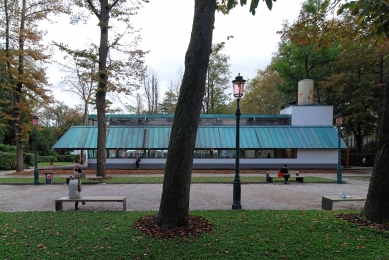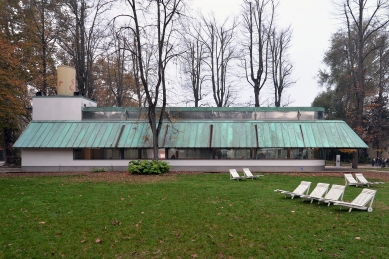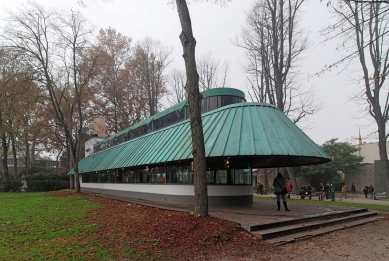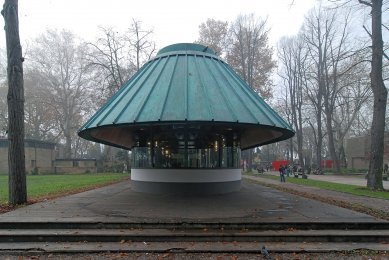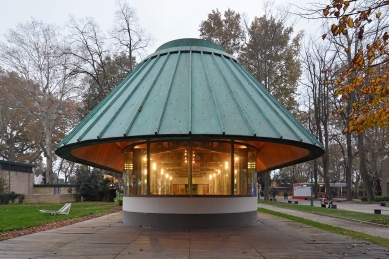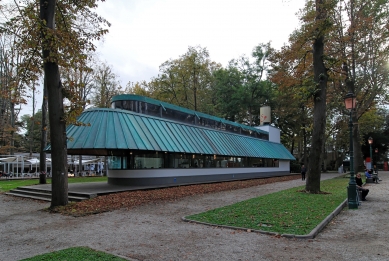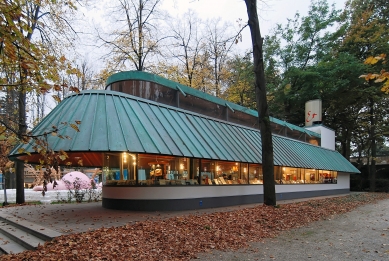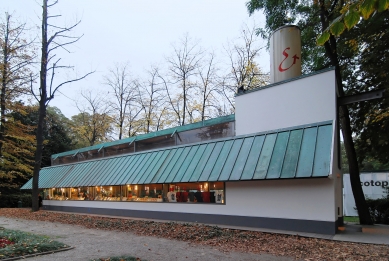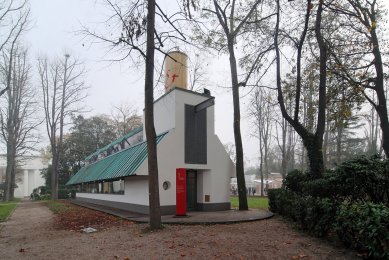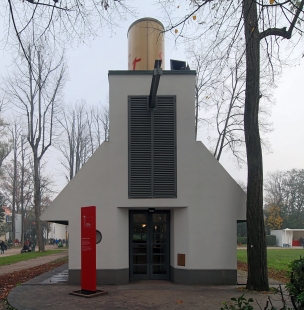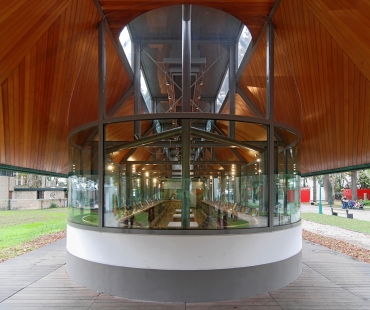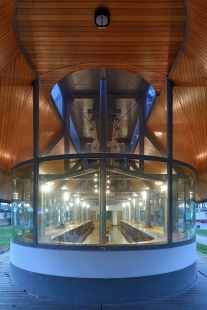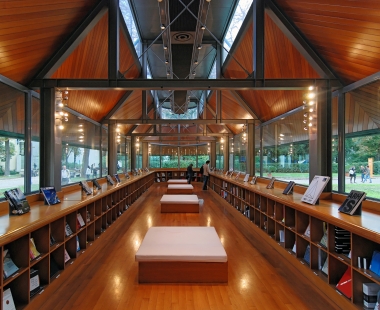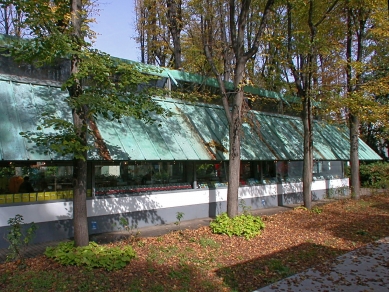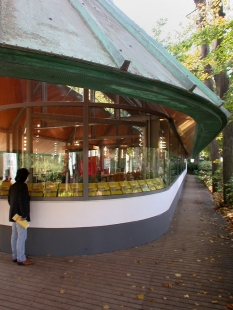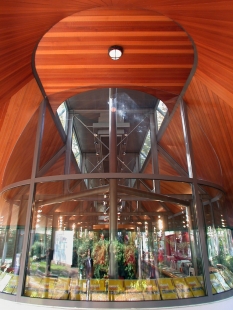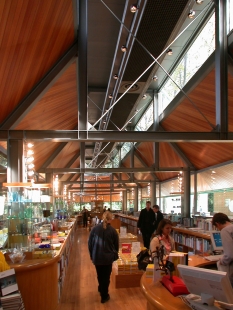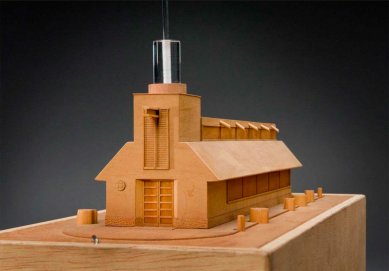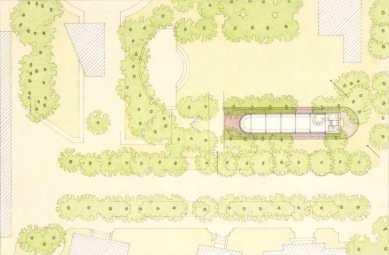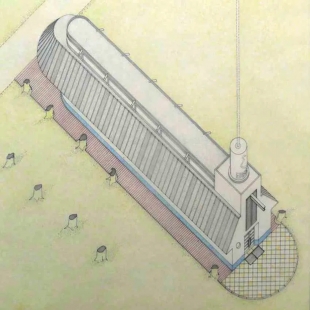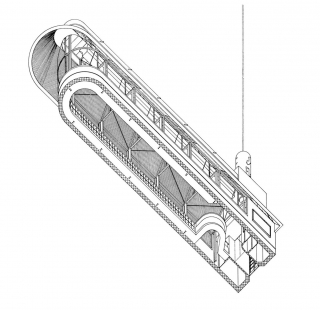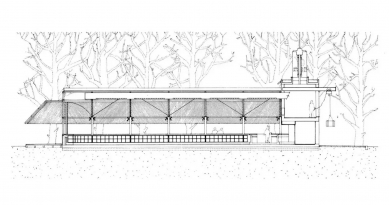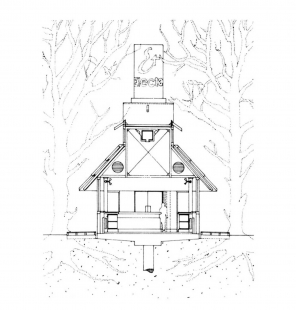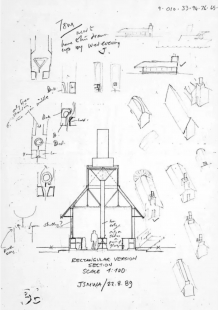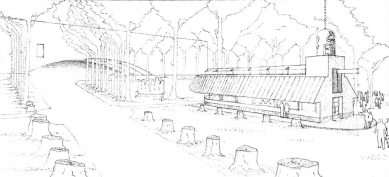In the works of British architect
James Stirling, a distinctive form merges with industrial details, which was influenced to some extent by the cities where he grew up. Stirling was born in the Scottish port city of Glasgow and studied architecture in Liverpool, whose docks have been a UNESCO World Heritage Site since 2004. Many of Stirling’s designs include references to ships and port architecture. On the façade of the
postmodern museum in Stuttgart, Germany, there are details reminiscent of port cranes, oversized air conditioning exhausts, and railings resembling steam pipe systems. It is unnecessary to describe how the commission for a new book pavilion in the territory of the former city-state, which was once a significant maritime power, must have pleased Stirling in the twilight of his career. Stirling's design was intended to replace a small wooden structure from the 1950s by
Carlo Scarpa, which however burned down in the early 1980s. It was to be the flagship of the book publisher
Electa, located at the intersection of two main axes right at the entrance to the exhibition area of the Venice Giardini. The book pavilion has a narrow elongated shape (30 meters long and 6 meters wide) with an overhanging copper roof finished with a continuous skylight. Above the entrance area, we find a known element from port buildings: a steel bracket used for suspending a supply pulley for the upper store hidden behind vertical shutters. From the opposite side, the pavilion resembles a rounded ship’s bow. The overall nautical impression is accentuated by a cylindrical light advertisement on the roof resembling the chimney of a steamship. Inside the pavilion, the gray-painted steel structure remains exposed. The shiny wooden floor, book shelves, and soffit of the roof evoke the atmosphere of a ship’s deck. The resulting object confirms Stirling’s reputation as a “master of styles,” as it blends interwar nautical functionalism with elements of British high-tech and cultured postmodernism.
The English translation is powered by AI tool. Switch to Czech to view the original text source.

